Can someone please point me to references, and/or give advice, for do-it-yourself lighting for the buildings on my HO layout? I don’t mind soldering. I am using Digitrax but I am not sure if I want to control my lighting manually or control it with DCC. Thanks!
You will find that this is one of the more rewarding parts of this hobby for the amount of work it takes. The end results usually look great without needing skill. What I do is I take very small bulbs (more hard to find nowadays, check ebay) from brands that made them (like LifeLike) and find out where I want my building to go. Then, I determine what rooms to light or to have the whole thing lit (like a resturaunt). I would advise black construction paper to block windows or rooms where you don’t want light. Afterwards, I drill holes to feed my wires through the layout. I have hit upon a rather neat way to provide power for my lights. I use old cheapo power packs and wire the leads to the DC terminals. That way, I can vary the voltage to provide variety in intensity and provide a safe guard against accidentally frying something. This means that you can use LEDs too, but I haven’t used those yet. If you don’t have a whole bunch of old power packs, you can also use toggle switches to independantly turn them on or off.
It would help if you told us the type and quantity of buildings. I personally like to use incandescent bulbs in my houses and buildings. I use 12 volt Grain of Wheat (GOW) operating at 8½ volts for the most realistic look. For me the LEDs don’t look as realistic as incandescent lighting but then I model the 1950s too.
EDIT:
My Roundhouse lighting:

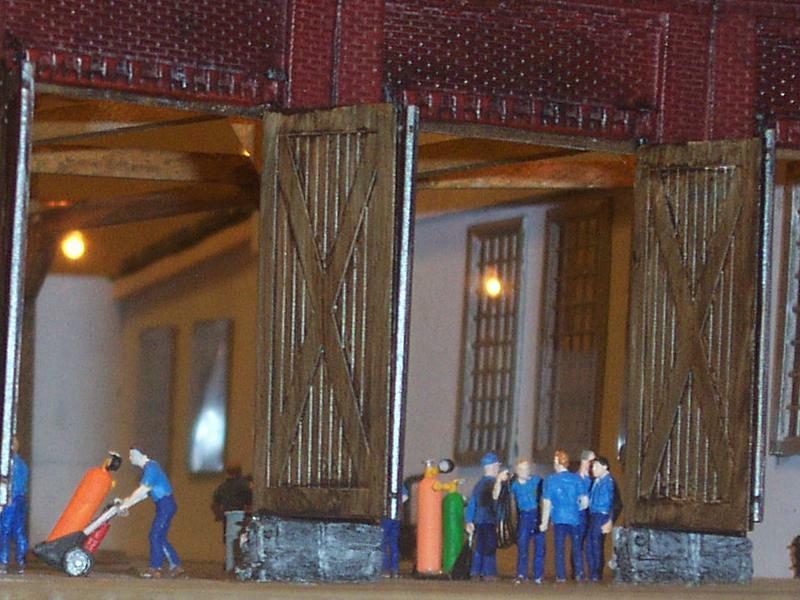
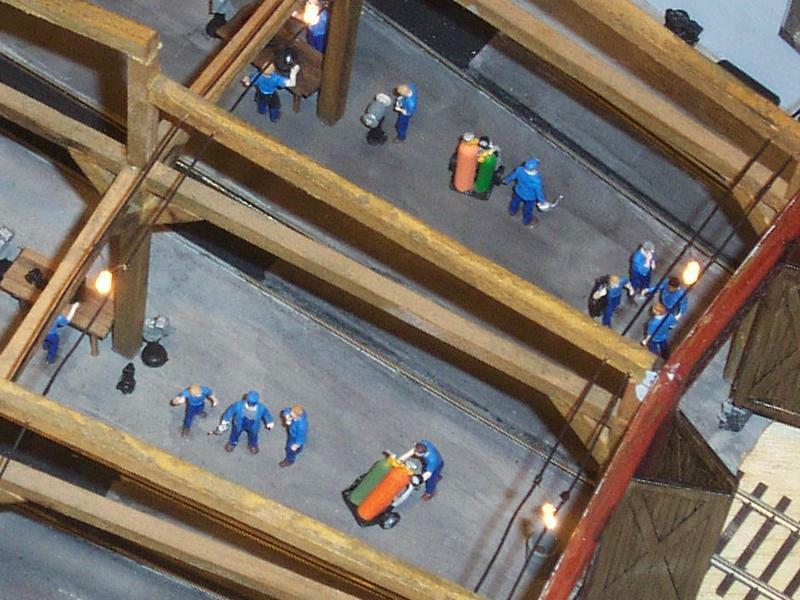
Mel
I am in the process of adding buildings as I go. I would expect to have perhaps 12 to 15 buildings by the time I am complete. One building will be a roundhouse. I would also like to add a few street lights. I like the Woodland Scenic light system that is available, but it is too expensive for me. I, too, am modeling the 1950s and very early 1960s.
Jack
Check out these guys.
I have bought stuff from them and it is good quality. I ordered 500 LEDs from China for under $5.00 so that is the way to go for the actual LEDs. Search on Ebay for the LEDs and there will be many companies that show up. It is hit and miss on who has what at any particular time but service has always been great from the many I have dealt with.
An Ngineering light hat with an LED. Tiny stuff that requires a steady hand, what was I thinking.[(-D]
BATMAN
What size LEDs have you found to do well for lighting a building? I see them in 3, 5, 8, and 10mm. I have found lots of LEDs, but nothing like 500 for $5.00.
Jack
Jack
I always shop for the lowest price also. I buy my GOW bulbs off eBay for about $15 per 100. If you shop a bit you will find them in 2.5mm, 3mm and 4mm diameter.
I went with a 12 switching power supply and DC to DC convertors to drop the voltage. The DC to DC convertors are regulated and adjustable from a bit over 1 volt to to 24 volts at 8 amps continious. I found 10 amp power supplies for a bit over $10 and the DC to DC convertors for under $5.
I have about 300 GOW bulbs on my layout. The incandescent bulbs draw
I too prefer small incandescent bulbs for my structure lighting. I get 16 volt bulbs from Miniatronics and run them at 12 volts. That gives me the subdued yellow glow for my 1950s layout, the bulbs last longer and I can use all standard parts.
I like to build interiors for my buildings, which lets me selectively light rooms. The walls and floors are done by printing them on my computer and gluing the images to poster board.
With some window shades, this all comes out very well.
Hi starman:
Nothing brings a building to life more than lighting! Let me share my thoughts.
First, GOW (Grain Of Wheat) incandescent bulbs look great but they have a limited life compared to LEDs. If you want to use them, do what Mel suggests, i.e. run them well below their stated maximum voltage. Mel’s example of running a 12v bulb at 8.5v is spot on. In some cases you might desire a very small bulb. They are usually 1.5v max. so you would run them at 1.2v to extend the life. There is still a risk of burning out the incandescent bulbs so I would suggest that you plan your building so that the bulbs are accessable for replacement.
I prefer to use LEDs. As Ed suggested, you can get them for peanuts on eBay. Unfortunately that can be a bit of a crap shoot in terms of colour (Canadian spelling eh!). 3mm LEDs can be purchased in nice warm tones but the tiny 0402 and 0603 SMD LEDs (Surface Mount Devise) like the one that Ed showed are sometimes a bit blueish and tinting them can be a challenge. Having said that, I prefer the 0603 or 0402 sizes for things like a goose neck lamp over a door because they are easier to hide inside a lamp shade. 3mm LEDs are fine where they can’t be seen directly and they are OK where you are modelling a large industrial lamp like those that would be used in a roundhouse.
You can buy the 0402 and 0603 LEDs without leads attached which is what I used to do, but soldering leads to them is rather difficult. For some time now I have purchased those LEDs with leads already attached. They are much easier to work with. Be advised that you must handle them with care or the leads can break off!
You must use resistors with LEDs. Most LEDs operate in the 2v - 3.5v range. Theoretically, you could use a power supply with the same rating but that might result in having LEDs with varying brightness, especially where different colours are involved. You are better off to use a 12v power supply and one resistor per LED. You can run several LEDs using one re
I decided to go the LED route, always using the “warm” color, though those tend to be cooler than old incandescent color. I started with 5MM from Lowes Christmas light set, then got 3mm also from China. Then got strip LEDs, which are wired for 12 volts and have numerous segments of 3 LEDs (each segment has resistors and uses 12 volts) that can be cut off is desired lenght (3, 6, etc), handy fo larger, well lit interiors.
I power mine from 12v regulated (3) “walwart” power supplies. I use 22AWG for the under table wiring as well as in the interiors. Inside, I CA glue the wiring as needed to keep is out of sight, such as in a front wall corner.
I have the SMD LEDs (definitely pre-wired!) but only use them for loco smaller lights. My hat is off to the work some have shared with small LEDs as well as incandescent effects. They are a lifetime ahead of me in skills and wisdom. My approach is more “intermediate”, like skiing. A few of my buildings are rather over-lit; e.g., you will need sunglasses in the diner. These are my learning curve on display. I do not do night scene operation, rather in daylight or room light, so a bit overlit or too cool is not so bad. The grandkids like it in any event, they always want to turn the lights on.
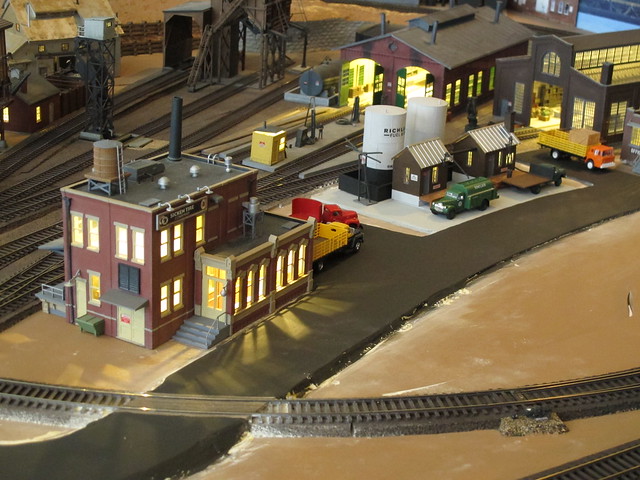 IMG_5149 by Paul Ahrens, on Flickr
IMG_5149 by Paul Ahrens, on Flickr
I bought my streetlights from Wehonist on eBay. This is one of my street lights with a Mel plug in base.
Before the Mel connector.
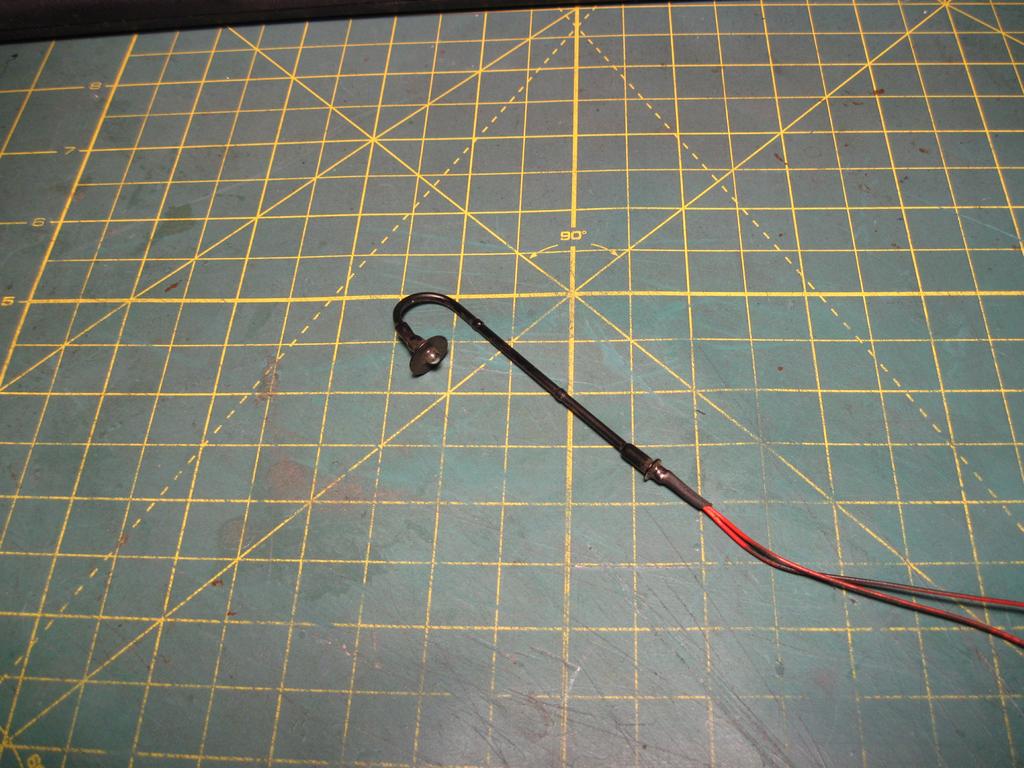
After the Mel connector.
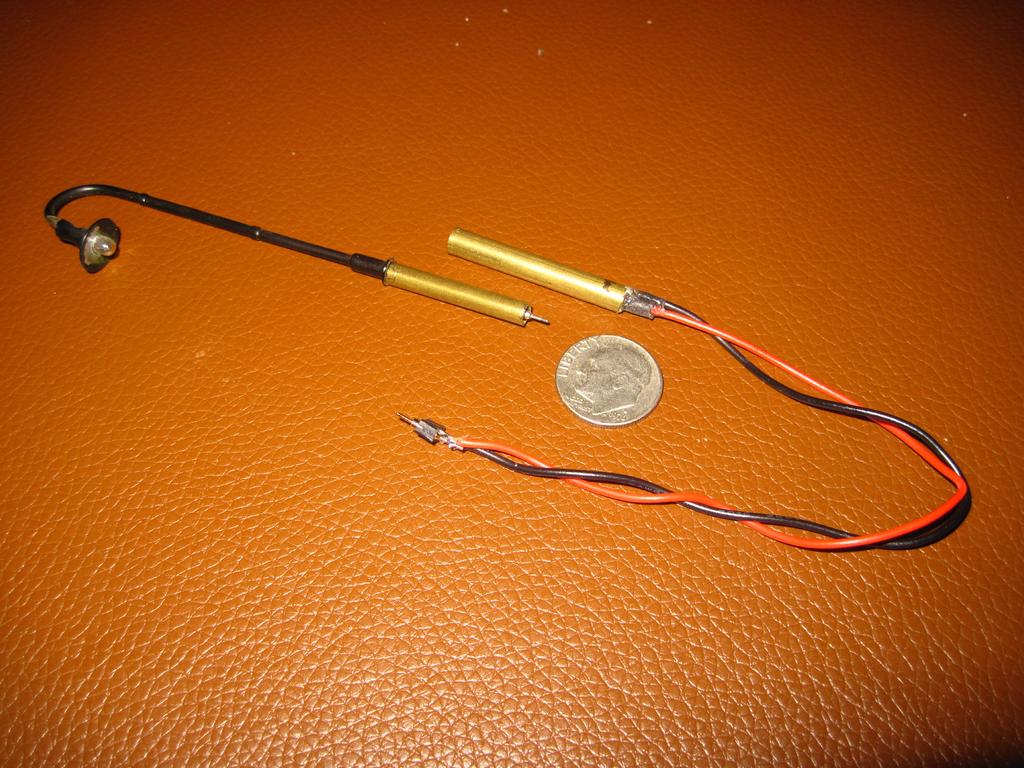
I made the base from K&S brass tubing. They plug into the brass sockes on my layout so that they are easily removable. I’m super clumsy and I remove them when I’m working in the area so as not to ding them.
Since I standardized on 16-volt bulbs run at 12 volts about 10 years ago, I have yet to burn out an incandescent bulb. Eventually, yes, they will start to go, but so far, so good.
I have a box of wall warts of various capacities. I used to use them, but I don’t install them anymore. Instead, I have several 12VDC supplies distributed around my layout. Each runs one or two lighting buses. These are 4 or 5 amp supplies, so they can run a lot of bulbs without running close to capacity or overloading. I’ve got control panel toggles for each bus which makes it easy to go to “night time” mode.
I have quite a few street lights. I use several models of the Walthers Cornerstone ones. The ones on my layout are all 16 volt, again powered at 12 volts, and again they are on a “streetlight bus” by themselves. I’ve never burnt one out, but when I look at them I realize that you can’t replace the bulbs so they are going to be throwaways when that happens. I have extras of most of them.
My operating crossing gates and flashers are controlled by a 12-volt board, so that’s got its own panel toggle and bus for power. My Miller Engineering signs run at 4.5 volts. I measured their current draw with the supplied battery pack and then used Ohm’s Law to figure out the right resistor to put in series to bring my 12 volt bus voltage down to 4.5 volts.
I’ve decided to go with LED. I want my buildings to be removable for an eventual move. I was thinking of using male female plugs like these
https://www.ebay.com/sch/0%20Pcs%20Gold%20Plated%202.54mm%20Male%20female%2040?rmvSB=true
Space Mouse made a DIY circuit board for a below the layout, resistor wiring
http://cs.trains.com/mrr/f/744/p/269718/3058728.aspx#3058728
I can’t offer mutch advice as I just started myself, with the help I got here.
I went with 12V incandencent,powered by an old DC power pack. Ran 2wires around the layout, and then droped wires down from building. Kept it simple.
Turns out to be an enjoyable project. Try it, you’ll like it
Henry
Those connectors work great. If you go with the male and female strips you can push out a pin from both and make the connectors polarized so that you can keep the polarity correct.
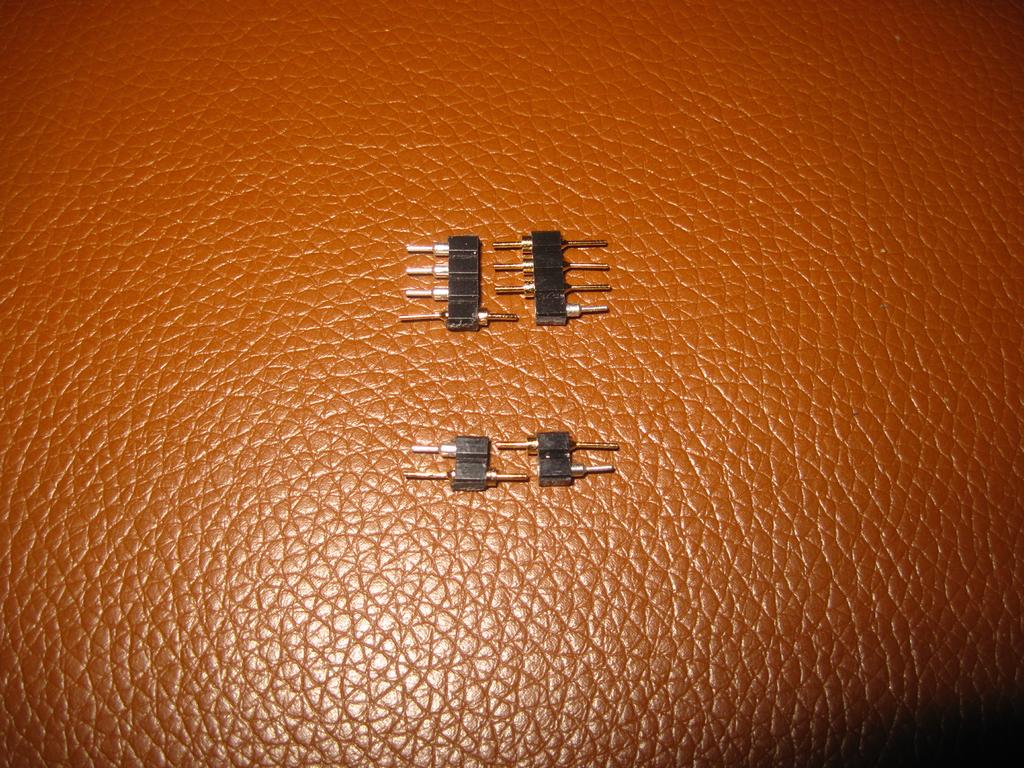
Uncle Butch
What guage wire did you run around your layout and what is the length of the run?
Jack
This is a good opportunity to point out the differences in lighting. Paul and I both built similar kits. Mine is the City Classics diner, one of my favorite small, simple kits. Here is his version:

And here is mine:
We chose a similar color scheme, and both of us took advantage of the large windows in the building to add an interior and some customers. His LED lighting contrasts with my incandescent light, so those of you who are new at this can see the difference.
Dave, I wouldn’t control the brightness of an LED by a resistor. If you want to do it right use a PWM module. They are cheap to get, however I know only the ones controlled by IR remote control.
Calculating the resistor value for multiple LEDs is as easy as for a single one. Subtract the LED voltage (3v) from the supply and divide by the current needed (No. of LEDs x 20 MA). The values I used are typical and must be adujsted for the LEDs used.
Walid
Hi Walid:
In the case where I used the 30,000 ohm resistors I had 22 LEDs in an old street car with a detailed interior. I was able to create a bus system in the ceiling and it was easy to solder the SMD resistors right to the phosphor bronze bus wires. I wanted to mimic the original electric lamps that were placed between each of the side windows. The camera makes them look brighter than they are:

Dave
You do not want to use DCC to power structure lighting. Your DCC system only has a limited amount of power available, and it should be reserved for trains. Buildings just sit there and can be run with a low-price power supply, or as many of them as you need.
